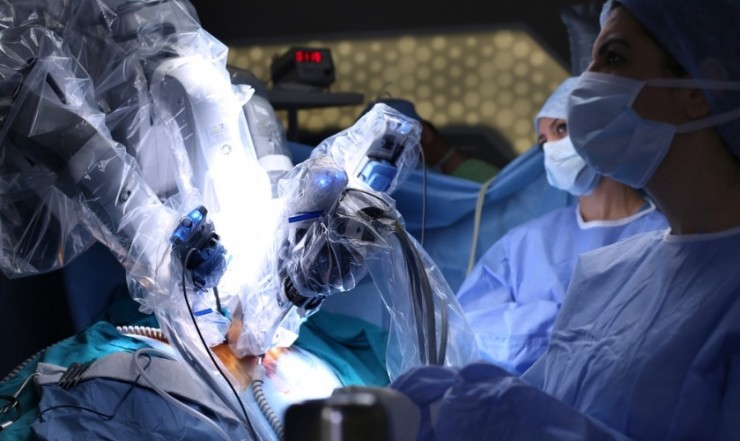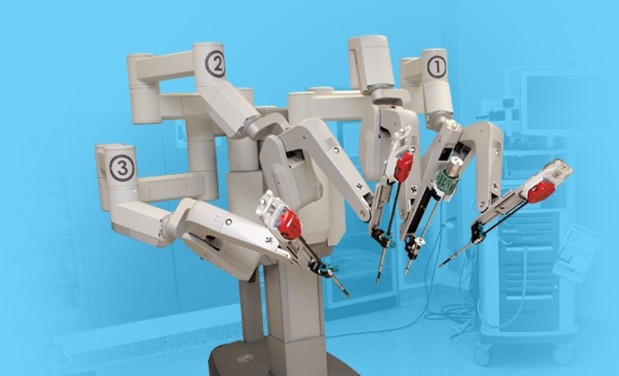According to Boston Consulting's estimates, the annual revenue of medical robots is 4 billion US dollars, and will reach 11.4 billion US dollars in 2020, becoming the second largest robot market. This article is the first part of the medical robot project launched by Xinzhi, to sort out the historical development track of medical robots, and to explore the infinite possibilities of the future market. As a column, Xinzhi has focused on innovation and creation in the intelligent era, with the goal of finding opportunities worthy of entrepreneurship and investment. We will also bring more reports on medical robots, such as industry players, capitals and start-ups, so stay tuned. The term for medical robots can be a bit misleading and reminiscent of independently operating pre-programmed tasks without the need for a supervised machine. Such applications are very popular in the industry, but human skills are also very important when dealing with human tasks. It is generally believed that medical robots should be medical devices, but different from medical devices. It can assist doctors, expand the doctor's ability, and the level of intelligence will continue to grow, while also meeting the following three aspects: medical, clinical adaptability and good interactivity. Medical robots have only been used in recent decades, but their presence is rapidly increasing. According to Boston Consulting's estimates, the annual revenue of medical robots is 4 billion US dollars, and will reach 11.4 billion US dollars in 2020. Intuitive Surgical, the most well-known medical robot company, achieved revenues of $2.1 billion in 2014. Thanks to the rapid growth of medical robots, commercial robots will replace military robots in the future and become the second largest robot market with a market value of $17 billion. There are many reasons why the medical industry is interested in robots, which can be compared with the reasons for using automated machinery in the manufacturing industry. This is not to say that the problem solved by medical robots is the same, but the benefits are undoubtedly similar. The benefits that robots bring to the industry may be more than the most professional and hardworking medical workers, including speed, accuracy, repeatability, reliability and cost effectiveness. A robot will not fatigue for a long time, and its accuracy in the first hundred uses is the same as in the first use. For the time being, medical robots are mainly divided into the following categories: Surgical robot: It can be used for surgical image guidance and minimally invasive surgery. Most of them are controlled by the surgeon. The doctor masters the input device and the robot operates on the patient according to the instructions. Rehabilitation robots: used to assist and treat elderly, permanent or temporary disabled patients and people with reduced mobility. The user controls the robot through visual feedback and various input devices to perform simple tasks such as putting food in the mouth or flipping through the book. , or stand and walk, etc. Medical service robots: The common form is transporting mobile robots in hospitals for taking medicines or dispensing medicines, as well as disinfection and sterilization robots. It can solve the problem of shortage of hospital staff and share some heavy and cumbersome work. Laboratory robots: For the purpose of conducting this drug or performing repetitive experiments, such as HIV testing, you can save time and free up manpower for other purposes. The main reason for this is the ability to perform repetitive tasks in a high-speed, reliable and fatigue-free manner. Of course, the above classification does not necessarily cover all medical robots, and there are other emotional robots for companionship that can help with dementia and cognitive impairment, as well as rehabilitation-type home care. According to statistics, the current proportion of surgical robots is the highest, at more than 60%. This main benefit is that it develops earlier, with the most practical and effective effects. However, with the development of robotics and artificial intelligence technology, rehabilitation and service robots are also catching up. The history of surgical robots will be highlighted below. The origin of a technology is often rooted in the strengths and weaknesses of its predecessor, and for surgical machines, the former is laparoscopic surgery. Transparent Dressing MDK-TD-02 China Transparent Wound Dressings,Clear Wound Dressing manufacturer, choose the high quality Waterproof Large Transparent Dressing,Transparent Dressing Wound, etc. Transparent Wound Dressings,Clear Wound Dressing,Waterproof Large Transparent Dressing,Transparent Dressing Wound Henan Maidingkang Medical Technology Co.,Ltd , https://www.mdkmedical.com
